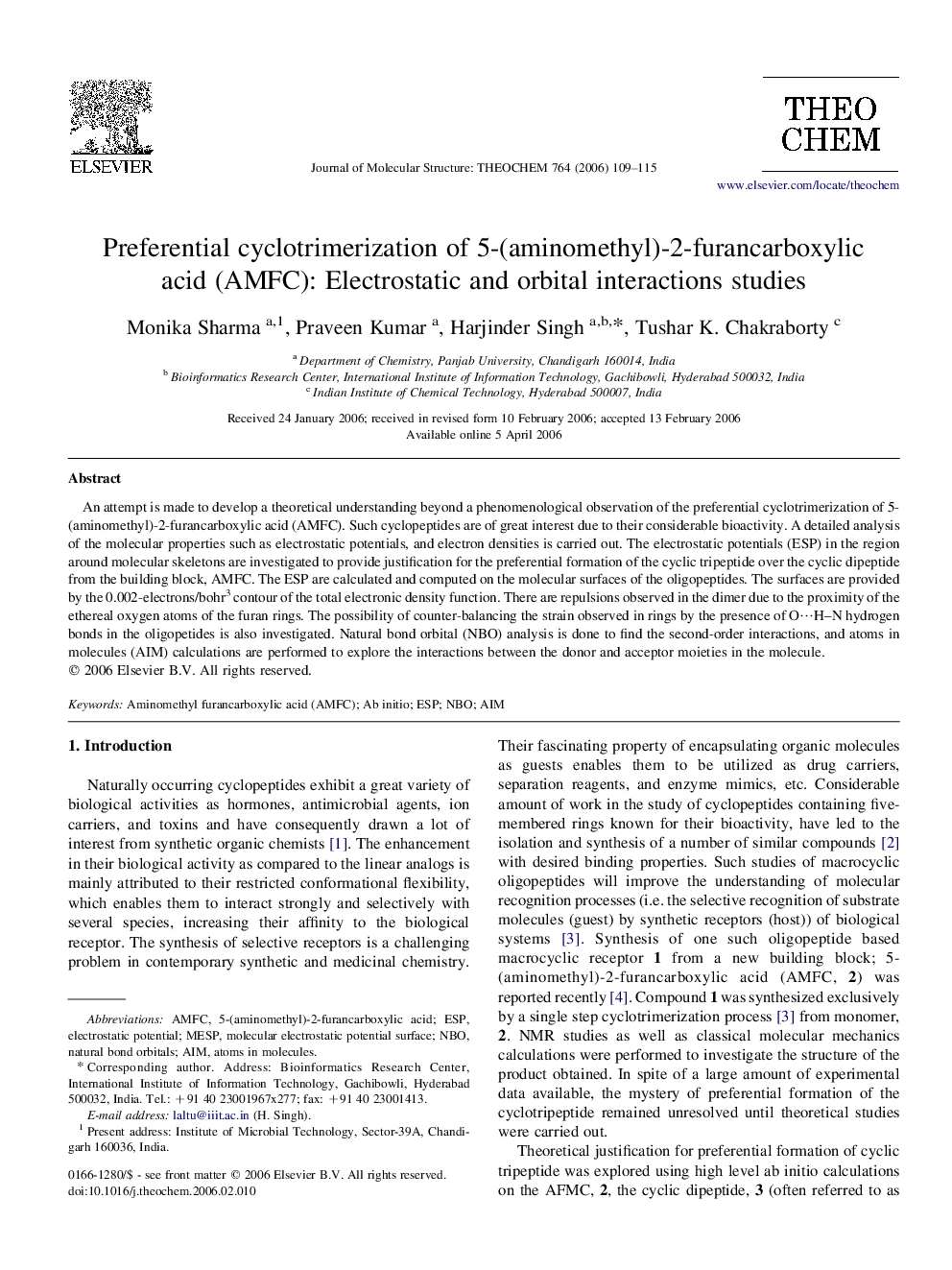| Article ID | Journal | Published Year | Pages | File Type |
|---|---|---|---|---|
| 5419021 | Journal of Molecular Structure: THEOCHEM | 2006 | 7 Pages |
Abstract
An attempt is made to develop a theoretical understanding beyond a phenomenological observation of the preferential cyclotrimerization of 5-(aminomethyl)-2-furancarboxylic acid (AMFC). Such cyclopeptides are of great interest due to their considerable bioactivity. A detailed analysis of the molecular properties such as electrostatic potentials, and electron densities is carried out. The electrostatic potentials (ESP) in the region around molecular skeletons are investigated to provide justification for the preferential formation of the cyclic tripeptide over the cyclic dipeptide from the building block, AMFC. The ESP are calculated and computed on the molecular surfaces of the oligopeptides. The surfaces are provided by the 0.002-electrons/bohr3 contour of the total electronic density function. There are repulsions observed in the dimer due to the proximity of the ethereal oxygen atoms of the furan rings. The possibility of counter-balancing the strain observed in rings by the presence of Oâ¯H-N hydrogen bonds in the oligopetides is also investigated. Natural bond orbital (NBO) analysis is done to find the second-order interactions, and atoms in molecules (AIM) calculations are performed to explore the interactions between the donor and acceptor moieties in the molecule.
Related Topics
Physical Sciences and Engineering
Chemistry
Physical and Theoretical Chemistry
Authors
Monika Sharma, Praveen Kumar, Harjinder Singh, Tushar K. Chakraborty,
